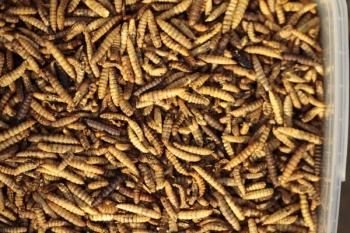
- Vetted February 2020
- Volume 115
- Issue 2
The microbiota in veterinary GI disease
Heres why its important to consider the microbiota in veterinary patients with GI disease.
nobeastsofierce/stock.adobe.comThe term microbiota encompasses all microbial organisms within and on a host organism, including bacteria, viruses, protozoa and fungi. Most research on the microbiota is focused on bacterial species within the gut and on other mucosal surfaces, such as the vaginal and respiratory tracts. Another common term, microbiome, describes the combined genetics of organisms within the microbiota.
Distinguishing these terms is important because the microbiome is thought to influence how host organisms interact with the microbiota across mucosal surfaces.1,2 It's been shown that genetic and environmental factors, such as high-fat diets, food additives and stress, can impact bacterial populations within the gut. Additionally, some species of bacteria are associated with increased inflammation and gastrointestinal (GI) signs.
Maintaining a healthy microbiota and mucosal homeostasis is essential to mucosal immunity and a healthy gut.1,2
Microbiota in health and disease
The quantity and variety of organisms within the GI tract differ throughout the gut and over the course of an animal's life. Infants are colonized by the mother's microbiota during vaginal delivery and continue to acquire new commensal species throughout the course of their lives. It's known that babies born via cesarean section have higher incidences of childhood immune-mediated diseases and have different bacterial species in their GI tract early in life compared with babies born vaginally.3 Additionally, bacteria isolated from infants born by C-section are often associated with increased inflammation in the gut.3
The quantity of microbes also varies throughout the GI tract, with the fewest being in the upper GI tract. It's estimated that 101 organisms/g reside in the stomach and mostly consist of Lactobacillus, Helicobacter, and Veillonella species.1 Bacterial numbers from the duodenum to the ileum range from 103 to 107 cells/g and consist of bacilli, Corynebacteriaceae, Actinobacteria, Actinomycinaeae and Streptococcaceae. Finally, the colon contains the largest volume of organisms (1012 cells/g) and is home to a variety of species, including Bacteroidetes and Lachnospiraceae. These bacteria both aid in digestion and compete for resources, which helps keep pathogenic species at bay.1
The mucosa of the GI tract is essential to the overall health of humans and companion animals alike.1 The mucus layer and ciliated epithelial cells aid in trapping potential invading pathogens and moving them through the GI tract. Layers of epithelial cells prevent infiltration of pathogens, and resident immune cells, such as macrophages and dendritic cells, survey the region for pathogens and mount a response if danger is detected. Secreted enzymes, acids and antimicrobial peptides, as well as peristaltic movements, are also part of the innate defenses in this region of the body. The intestinal mucosa serves as a barrier to infection; however, in some circumstances, dysbiosis of the microbiota, genetic abnormalities and environmental factors can contribute to breakdown of the mucosal barrier, leading to unwanted inflammation and symptomatic GI disease.1,4
Infection, dysbiosis, and unmet needs in gut microbiota
In veterinary medicine, a large percentage of nonpreventive visits are attributed to some kind of GI upset, such as an infection, adverse food reaction or allergy, immune-mediated condition, cancer or toxicity.1 These conditions disrupt the homeostatic environment in the gut needed for good health. It's known that the microbiota is dynamic throughout the course of an animal's life, and infection and inflammatory conditions alter it.
Infection should always be one of the first rule-outs when a patient presents with GI upset. As a result, antimicrobials are widely used in veterinary medicine. Shelter environments, poor breeding practices and husbandry, and use of raw food diets, to name a few, warrant the use of these types of medications in many cases; however, the full impact of infection and the use of antimicrobials in young patients remains unclear.
Global overuse of antibiotics has resulted in resistance to many commonly used and widely available antibiotics. It's unclear how antibiotic use affects the microbiome later in life. Military personnel who acquired infectious diarrhea while deployed overseas have been followed for decades after their military service. Through these studies, we've learned that these individuals have an increased prevalence of GI disease throughout their lives.5,6 It's thought that disruption in the microbiota and the mucosal barrier likely contributed to the inflammatory conditions these individuals experienced later in life.5,6
Chronic inflammation, regardless of the cause, alters the microbiota and in some cases causes chronic breakdown of the mucosal barrier.1 This chronic inflammation and loss of homeostasis can be debilitating for our patients and their owners. Immune suppressors are often used in combination with other therapies, such as change in diet and addition of probiotics, to control these chronic conditions. Endoscopic biopsies can be a valuable diagnostic aid in many of these patients. Nutritional deficiencies as a result of chronic inflammatory conditions should be also addressed.
Looking to the future of microbiota and GI disease
As noted earlier, the causes of GI disease vary, but disruption of the homeostatic environment within the GI tract can have lasting effects.1 Additional research is needed to fully understand how antimicrobials impact gut health over time, and additional diagnostic tools and treatment options are needed in veterinary medicine.
The use of biologics and immune modulators in human medicine to treat inflammatory bowel disease and similar conditions is becoming widespread in many countries. The use of these medications is associated with mucosal healing and, in many cases, drastic improvement of GI symptoms. Many of these therapies lack regulatory approval and are cost-prohibitive in veterinary medicine at this time; however, the potential for their use once generic or veterinary formulations become available may offer additional options for patients with severe and difficult-to-manage GI disease.
As with many veterinary ailments, human medicine is pioneering treatments that may be used in veterinary patients in the future. Luckily, human physicians and pharmaceutical companies are making great strides in effectively treating chronic inflammatory conditions of the gut. It's possible that minimally invasive commercial assays will become available to help diagnose inflammatory conditions by measuring proinflammatory cytokine levels in fecal samples.7 The use of biologics in veterinary medicine may be in the distant future, but these therapies may also offer hope to owners with animals suffering from these chronic conditions.
The microbiota, accompanying microbiome, and interactions with the mucosal barrier in the intestines should be considered when diagnosing and treating patients with GI conditions. There are many questions still to be answered concerning the role of microbiota in health and disease. Further research is ongoing in this field, and many questions still remain in both human and veterinary medicine. Therapies to treat patients with chronic inflammatory conditions of the GI tract are emerging each year.8,9 Veterinary medicine will likely be able to utilize what is learned from these studies and apply new therapies once they become available in veterinary formulations.
References
1. Jergens A. The emerging role of the microbiota in GI disease (oral presentation). NY State Vet Conf, New York, November 2018.
2. Redfern A, Suchodolski J, Jergens A. Role of the gastrointestinal microbiota in small animal disease. Vet Rec 2017;181:370.
3. Stokholm J, Thorsen J, Chawes BL, et al. Cesarean section changes neonatal gut colonization. J Allergy Clin Immunol 2016;138:881-889.
4. Chassaing B, Van de Wiele T, De Bodt J, et al. Dietary emulsifiers directly alter human microbiota composition and gene expression ex vivo potentiating intestinal inflammation. Gut 2017;66:1414-1427.
5. Wang WF, Geo XX, Yang YS, et al. Gastrointestinal problems in modern wars: Clinical features and possible mechanisms. Mil Med Res 2015;2:15.
6. Riddle MS, Welsh M, Porter CK, et al. The epidemiology of irritable bowel syndrome in the US military: Findings from the millennium cohort study. Am J Gastroenterol 2016;111:93-104.
7. Singh UP, Singh N, Murphy EA, et al. Chemokine and cytokine levels in inflammatory bowel disease patients. Cytokine 2015;77:44-49.8. Catalan-Serra I, Brenna O. Immunotherapy in inflammatory bowel disease: Novel and emerging treatments. Hum Vaccin Immunother 2018;14:2597-2611.
9. Ungar B, Levy I, Yavne Y, et al. Optimizing anti-TNF-α therapy: Serum levels of infliximab and adalimumab are associated with mucosal healing in patients with inflammatory bowel diseases. Clin Gastroenterol Hepatol 2016;14:550-557.e2.
Dr. Ashley Bohn received her PhD and MS from Georgia State University and was a practicing veterinary nurse for nearly 20 years. She provides freelance medical writing services through her business, Bohn Communications.
Articles in this issue
almost 6 years ago
4 ways to help clients pay for veterinary carealmost 6 years ago
Hospital design: What Bailey taught mealmost 6 years ago
Find marketing distasteful? Get over it with this simple approachabout 6 years ago
How to be a veterinary social media superstarover 6 years ago
Journal Scan: What's the power behind catnip?Newsletter
From exam room tips to practice management insights, get trusted veterinary news delivered straight to your inbox—subscribe to dvm360.






